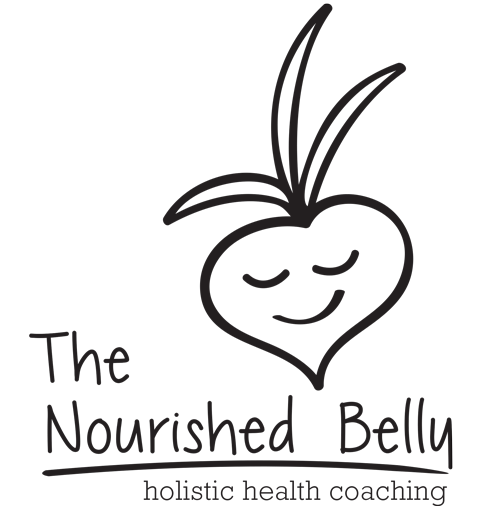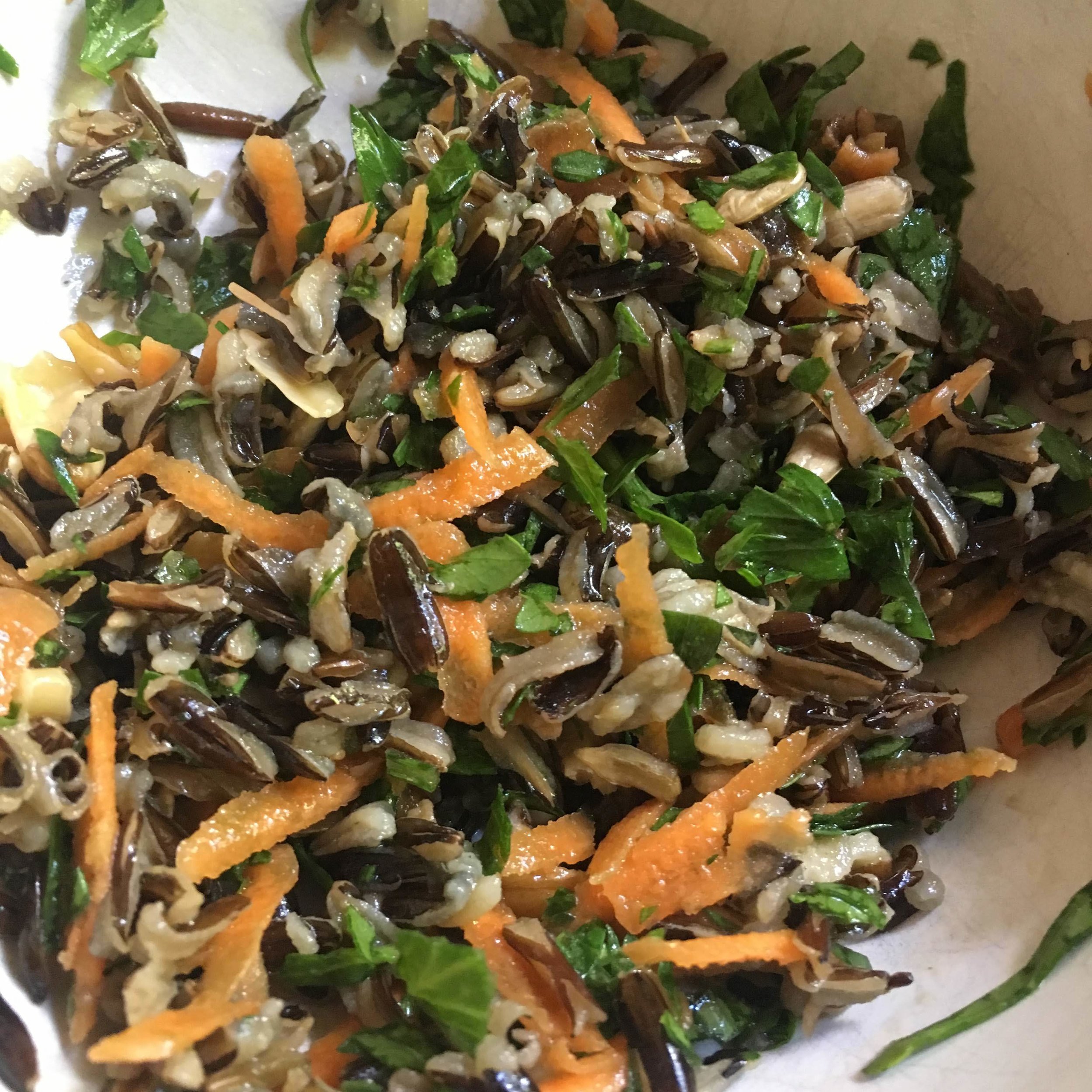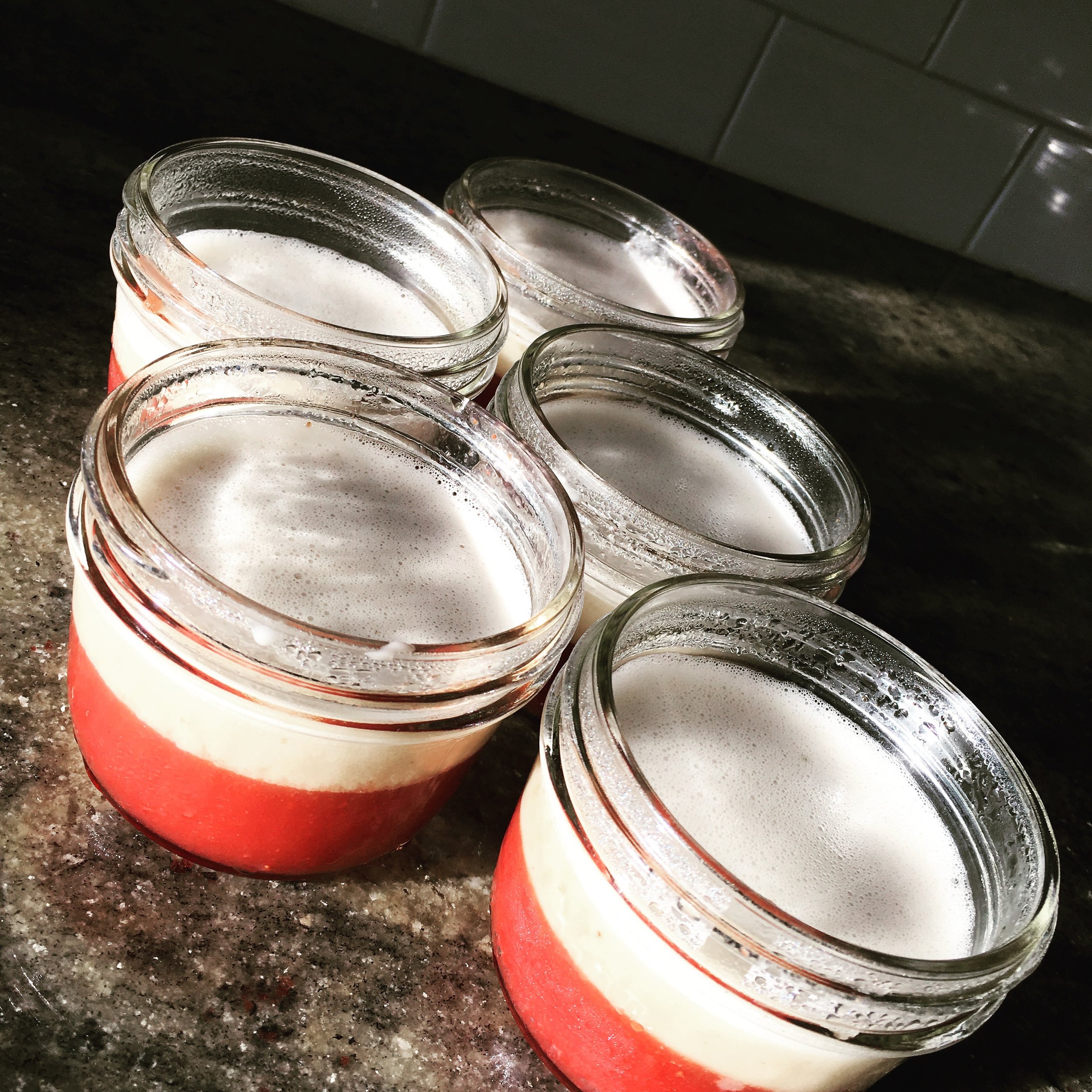I have always been curious about wild rice, but it seemed so unricelike in so many ways to my Taiwanese mind. It’s more nutty, more fibrous, and turns out…. it’s fabulous. It’s great eaten cold. After a friend made a wild rice salad for dinner one day, I was won over. Enough so that I wanted to put a recipe up!
According to Rebecca Wood in her book, “The New Whole Foods Encyclopedia,” wild rice is native to North America, originally found around the Great Lakes Region. (It turns out global warming and more frequent floods are making natural harvesting harder.) Wild rice is a cooling and drying food, which for me is great to eat when I’m feeling overheated or hot. There are some “hand harvested” wild rice varieties out there, which are usually pricier, but often go towards supporting native peoples. A google search will pull up small businesses that offer online sales of hand harvested wild rice.
Nutritionally, wild rice is high in zinc, high in protein for a grain, and a great fiber source. Plus it’s easy to make, and since it can be eaten cold, you can take it with you for lunch or a quick snack. Gotta make sure you chew a bunch cause it’s fibrous!
This recipe has apricots in it, they can be substituted with any dried fruit (currants, raisins, mulberries, it’s up to you!) If apricots sound good to you, buy natural un-sulfured apricots instead of the orange ones which are treated with sulfur dioxide. Store any unused in the freezer or eat them within a month or so.
Wild Rice Salad with Apricots and Mint
Wild Rice Salad
(makes 4 servings)
1 cup wild rice
3 cups filtered water
2 tablespoons extra virgin olive oil
1 tablespoon rice wine vinegar
1/2 cup of grated carrots
1/2 cup of chopped parsley
1/2 cup of crushed walnuts (or other nuts/seeds)
½ cup of dried unsulfured apricots (the brown kind)
1 fistful of finely chopped mint
Sea salt and pepper to taste
Directions:
Place 1 cup of wild rice and 3 cups of filtered water into a saucepan. Cover with a lid and bring to a simmer. Simmer for around 45 minutes until kernals pop open. Turn off heat and allow to sit with the lid ON for 10-15 minutes.
After the rice has cooled (you can make it on a different day even), mix with the rest of the ingredients.
Taste. Add more of any ingredient! Sometimes I like more apricots, and maybe I’ll add some feta cheese if it’s around.
Serve! Feel free to double the recipe if you are taking it to a potluck. Enjoy…..

















